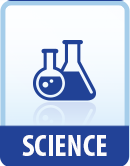|
This section contains 665 words (approx. 3 pages at 300 words per page) |

|
1787-1869
Czech Physiologist and Histologist
Jan Evangelista Purkinje made pioneering contributions to histology and physiology. His observations led to many important insights into the workings of the human body, especially various visual phenomena. He invented the microtome, an instrument that slices tissues into very thin samples, and demonstrated the importance of technical advances in microscopy for biological research. In addition to Purkinje cells, his name has been given to identify specific types of conduction, fibers, figures, layers, networks, phenomenon, systems, and Purkinje-Sanson images. Although he made some of the earliest observations of the cell nucleus, the characteristics of cells, and cell division, other scientists are generally credited with these discoveries. He introduced the term "protoplasm" to describe the contents of cells.
Purkinje, whose parents were Czech, was born in Libochowitz, Bohemia. He was educated by Piarist monks and intended to join the order, though...
|
This section contains 665 words (approx. 3 pages at 300 words per page) |

|


